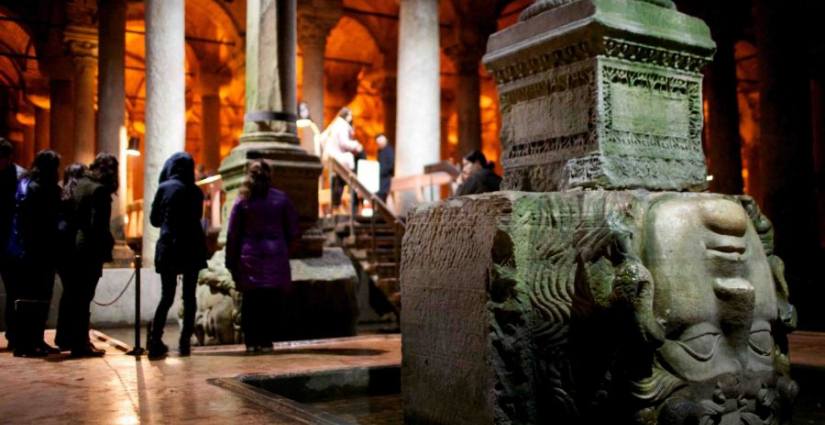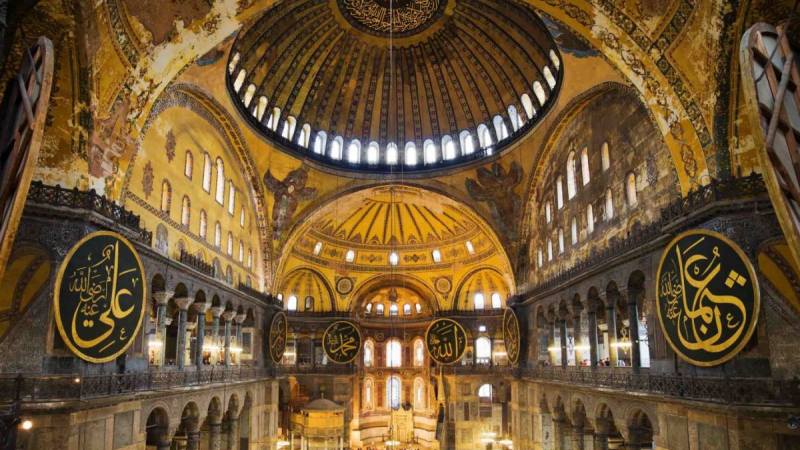
HAGIA SOPHIA
Hagia Sophia-i Kebir Mosque, which is among the most important monuments in the history of world architecture that has survived until today; It has an important place in the art world with its architecture, magnificence, size and functionality.
This magnificent work is the largest church built by the Eastern Roman Empire in Istanbul and was built three times in the same place. It was called Megale Ekklesia (Great Church) when it was first built, and it was called Hagia Sophia (Sacred Wisdom) from the 5th century until the conquest of Istanbul. Megale Ekklesia, which was built by Emperor Konstantios in 360, and the church, which was rebuilt by II. Emperor Theodosis in 415, were destroyed in the popular uprisings.
Today's Hagia Sophia-i Kebir Mosque was built by Emperor Justinianos, two important architects of the period, Anthemios from Tralles (Aydın) and Isidoros from Miletos (Balat).
It is understood from the records that one hundred architects working with two chief architects and one hundred workers under each architect completed the construction of the building in a short period of 5 years and 10 months.
The building, which was open to worship as a church for 916 years, was converted into a mosque when Fatih Sultan Mehmed conquered Istanbul in 1453.
Right after the conquest, the building was strengthened and preserved in the best way and continued its existence as a mosque with the additions of the Ottoman Period.
In the 16th and 17th centuries, mihrabs, pulpit, muezzin chambers, sermon pulpit and maksures were added to the mosque.
The minarets, madrasah, primary school, timetable, fountain, fountains, sundials, board of trustees and Hagia Sophia-i Kebir Mosque, which were built outside the building in different periods, were transformed into a complex structure during the Ottoman Period.
Hagia Sophia-i Kebir Mosque was converted into a museum in 1934 and served as a museum until 2020. In 2020, it gained the status of a mosque again.
The most important feature of the Hagia Sophia-i Kebir Mosque in its architecture is that its dome is larger than usual and dominates the middle space.
While the mosque was being built, the architects used marble, stone and brick in the construction of the building; In order for the dome not to collapse easily in earthquakes, specially produced, light and strong bricks were used.
Within the scope of the repairs carried out by the Swiss Fossati Brothers between 1847-1849 by the order of Sultan Abdulmecid (1839-1861), One of the most important calligraphers of the period, Kazasker Mustafa İzzet Efendi, wrote the 35th verse of Surah Nur of the Qur'an on the 11.3-meter diameter area of the main dome.
It is decorated with many mosaic ornaments with and without figures from different periods. The most important mosaic decoration examples that have survived from the period it was built are the mosaics without figures that can be seen in the nortex area.
It is thought that all the figured mosaics in the building were removed during the descriptive period. With the end of this period in 843, the first figured mosaic made in the building is the Apse Mosaic.
There are mosaics with figures made on different dates in many parts of the building, including the gallery floor, the Tympanon Wall, the narthex, the entrance to the vestibule, and the priest's rooms.
One of the most important Ottoman additions in the building is the library built by Sultan I. Mahmud in 1739. The library consists of the Reading Hall, the Treasury-i Qutb (the room where the books are preserved) and the corridor between these two sections.
The Reading Room is separated from the main space of the building by a glass window supported by six lozenge-shaped columns and a bronze grid covering it. The two-winged doors that provide the entrance to the library are covered with a bronze grid decorated with flowers and curved branches, and it has two handles with 'Ya Fettah' carvings. The walls of the reading room are decorated with tile inscriptions and inscription friezes. On the wall opposite the door, there is the monogram of Sultan Mahmud I from the porphyry bordered with green tiles.
In the reading section of the library, there are wooden lecterns decorated with mother-of-pearl inlay technique, in the form of a low, small table, some of which can be opened and closed, and two mother-of-pearl, ivory-covered Qur'an cases in which the Qur'an is preserved.
Iznik, Kütahya and Tekfur Palace tiles from the 16th, 17th and 18th centuries were used together in the library. The 16th century Iznik tiles in the Treasury-i Qutb and the composition of spring blooming branches in the corridor from the same century are the most beautiful examples of Turkish tile art. After the library was completed, Sultan Mahmud I sent the books in Galata Palace-ı Hümayun here; he also had the valuable books in the Topkapı Palace Treasure-i Hümayun sealed with his own seal and transported here. Approximately 5,000 manuscripts in the library were moved to the Süleymaniye Library in 1969.
(Kaynak: kulturportali.gov.tr)
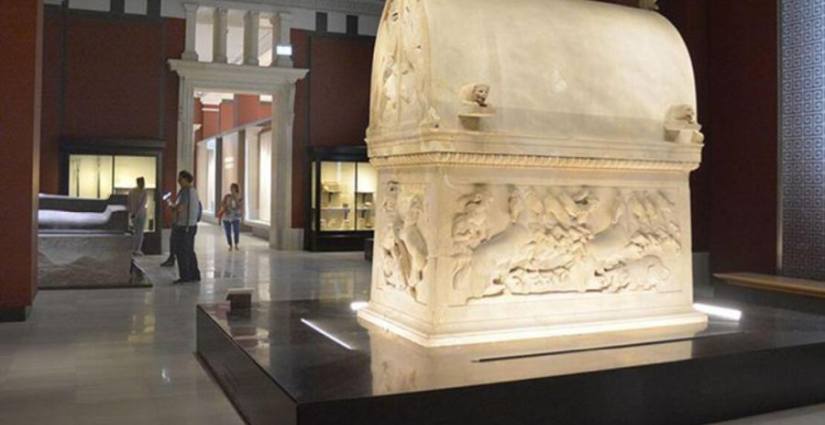
ISTANBUL ARCHAEOLOGICAL MUSEUMS
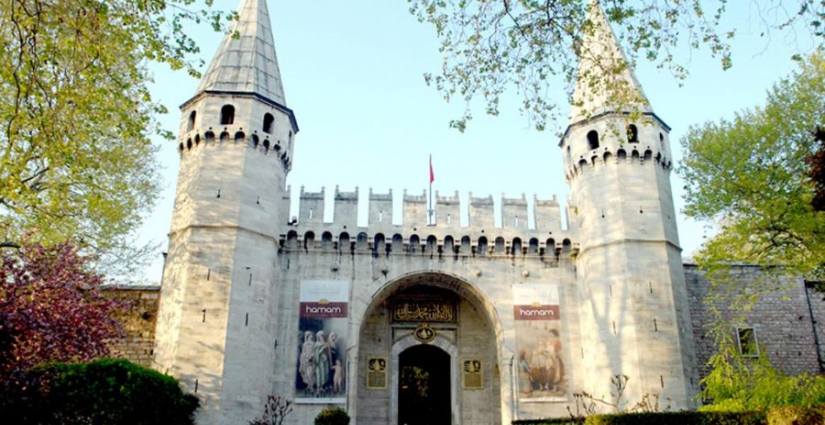
TOPKAPI PALACE
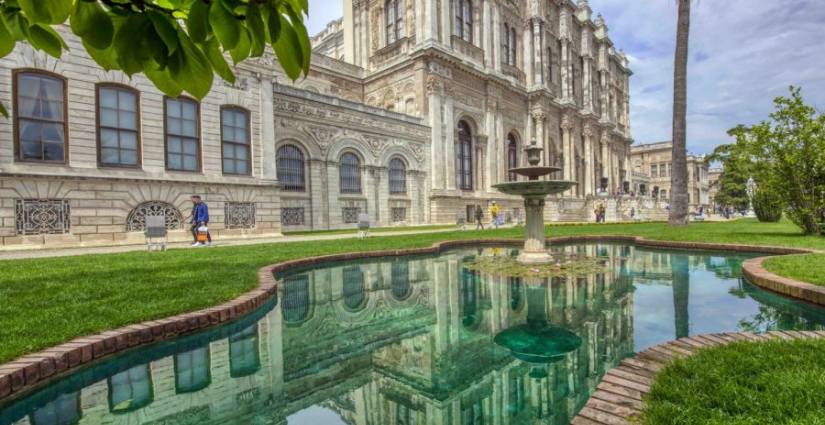
DOLMABAHCE PALACE
